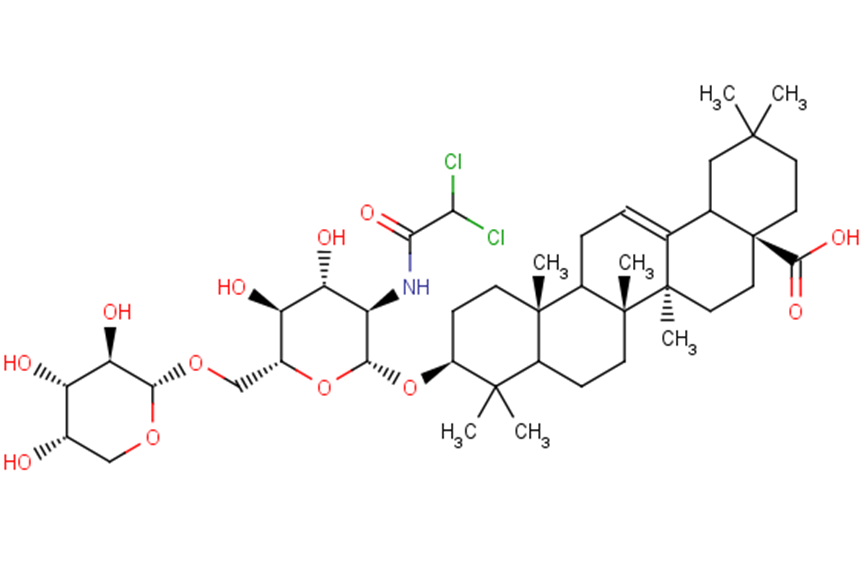Powder: -20°C for 3 years | In solvent: -80°C for 1 year


AlbA-DCA is a conjugate formed by the attachment of Albiziabioside A to a dichloroacetate acid subunit. It can induce a marked increase in intracellular ROS and alleviate the accumulation of lactic acid in the tumor microenvironment, and also selectively kills cancer cells and induce apoptosis.

| Pack Size | Availability | Price/USD | Quantity |
|---|---|---|---|
| 100 mg | Inquiry | Inquiry | |
| 500 mg | Inquiry | Inquiry |
| Description | AlbA-DCA is a conjugate formed by the attachment of Albiziabioside A to a dichloroacetate acid subunit. It can induce a marked increase in intracellular ROS and alleviate the accumulation of lactic acid in the tumor microenvironment, and also selectively kills cancer cells and induce apoptosis. |
| In vitro | AlbA-DCA exhibits the cytotoxicity against the MCF-7 cells, HCT116 cells, A375 cells, 4T1 cells, HBMEC cells and LO2 cells (IC50s: 0.43 μM, 3.87 μM, 3.78 μM, 1.31 μM, 38.20 μM and 53.14 μM). AlbA-DCA (2 μM; 24 hours) treatment induces apoptotic cell death in MCF-7 cells. AlbA-DCA (2 μM; MCF-7 cells) treatment could significantly up-regulate the expression of cytochrome c and down-regulate the expression of anti-apoptotic protein Bcl-2. AlbA-DCA significantly enhances the expression of caspase-9. |
| In vivo | AlbA-DCA (2 mg/kg; subcutaneous injection; every 2 days; for 2 weeks; nude mice) treatment displays antitumor efficacy and almost completely suppresses tumor progression, and no mouse deaths and no significant changes in body weight are observed. AlbA-DCA has no obvious toxicity of liver and kidney and no major abnormality is observed in the heart, liver, spleen, lung, and kidney. |
| Molecular Weight | 860.9 |
| Formula | C43H67Cl2NO12 |
| CAS No. | T13538 |
Powder: -20°C for 3 years | In solvent: -80°C for 1 year
You can also refer to dose conversion for different animals. More
bottom
Please see Inhibitor Handling Instructions for more frequently ask questions. Topics include: how to prepare stock solutions, how to store products, and cautions on cell-based assays & animal experiments, etc.
AlbA-DCA T13538 Immunology/Inflammation ROS AlbADCA AlbA DCA inhibitor inhibit
